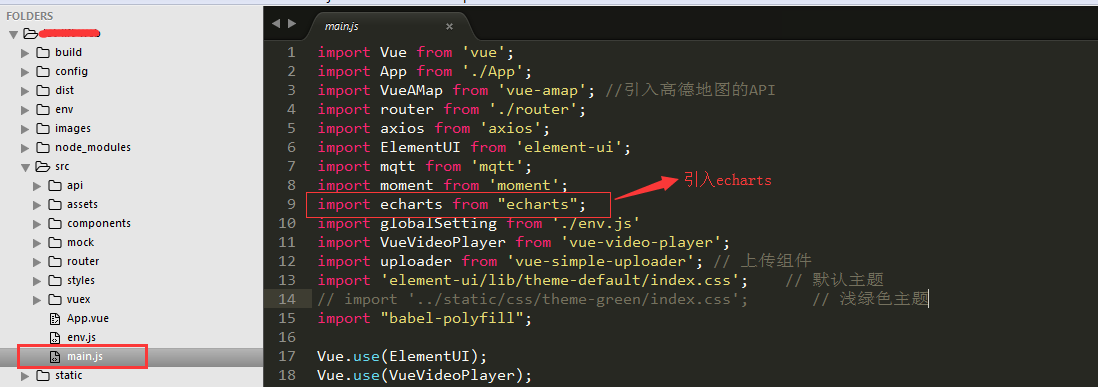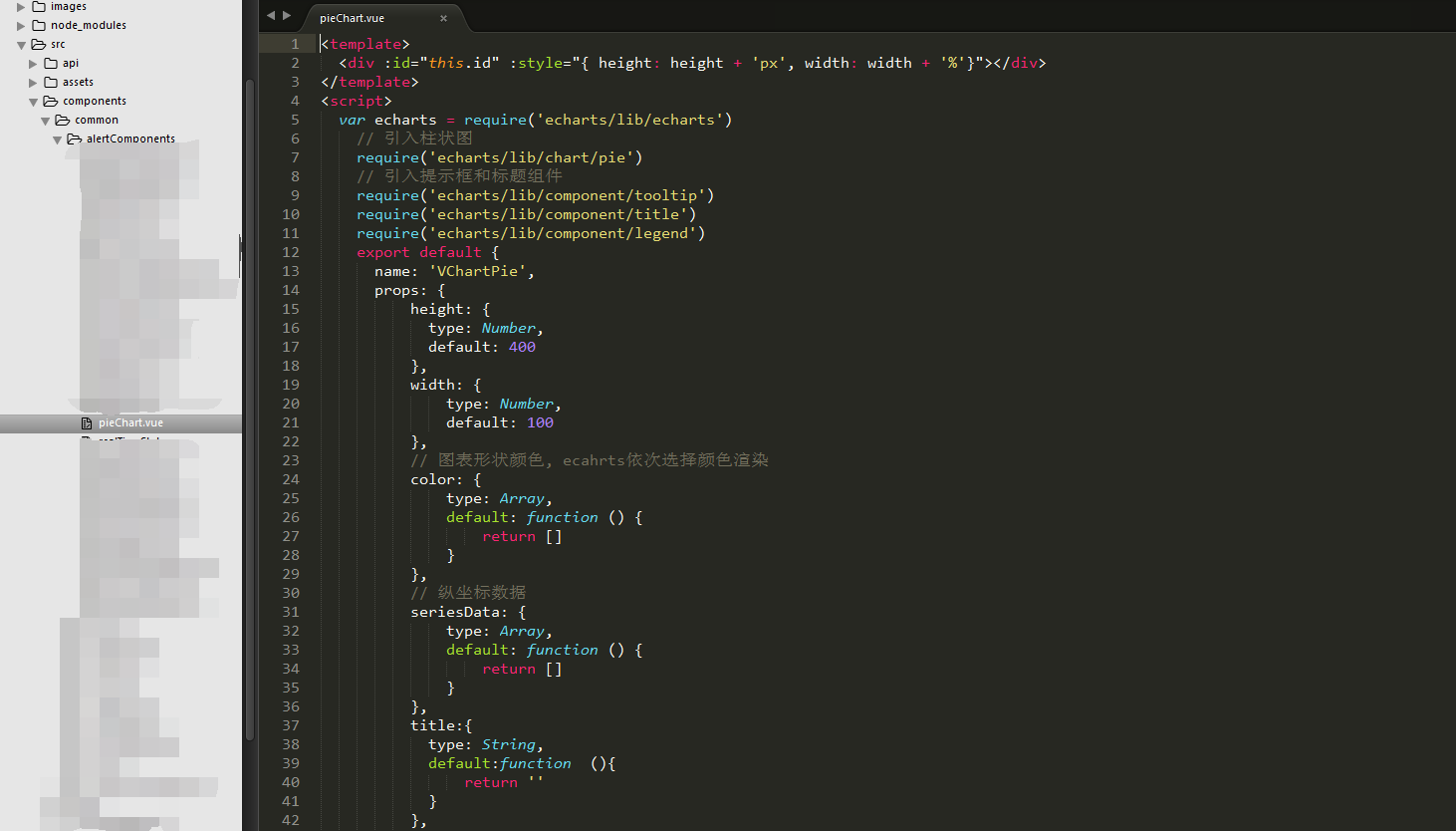一、需求
1、由于我们项目中有个页面,需要统计分析的功能
2、所以才想到vue中引用echart组件(备注:我们是利用vue-cli脚手架,初始化vue项目)
二、如何实现这个需求
1、引入Echart包,通过以下命令安装Echarts
![]()

2、写一个环形图的子组件

该组件比较全的代码如下:
<template> <div :id="this.id" :style="{ height: height + 'px', width: width + '%'}"></div> </template> <script> var echarts = require('echarts/lib/echarts') // 引入柱状图 require('echarts/lib/chart/pie') // 引入提示框和标题组件 require('echarts/lib/component/tooltip') require('echarts/lib/component/title') require('echarts/lib/component/legend') export default { name: 'VChartPie', props: { height: { type: Number, default: 400 }, width: { type: Number, default: 100 }, // 图表形状颜色, ecahrts依次选择颜色渲染 color: { type: Array, default: function () { return [] } }, // 纵坐标数据 seriesData: { type: Array, default: function () { return [] } }, title:{ type: String, default:function (){ return '' } }, orient:{ type: String, default:function (){ return 'vertical' } }, legendTop: { type: Number, default: 40 }, legendRight: { type: Number, default: 4 }, itemGap: { type: Number, default: 8 }, radius:{ type: Array, default: function () { return [] } }, center:{ type: Array, default: function () { return [] } } }, data() { return { } }, computed: { // 生成一个随机id, 实现图表组件的复用 id: function () { return parseInt(Math.random() * 1000000) }, legendData: function () { let legendData = [] this.seriesData.forEach(function (elem) { legendData.push(elem.name) }) return legendData } }, methods: { renderPieChart: function () { if (this.chart) { this.chart.dispose() } // 初始化echart this.chart = echarts.init(document.getElementById(this.id)) // 自定义eChart样式 官方配置指南(http://echarts.baidu.com/option.html#yAxis.splitLine.lineStyle.color) this.chart.setOption({ title:{ text:this.title, textStyle: { fontSize:16, fontWeight:100, }, }, legend: { icon: 'stack', data: this.legendData, itemGap: this.itemGap, itemWidth: 12, itemHeight: 12, top: this.legendTop, right:this.legendRight, orient: this.orient, }, grid: { left: 0, right: 20 }, color: this.color, tooltip: {}, series: { type: 'pie', radius: this.radius, data: this.seriesData, labelLine: { normal: { show: false } }, label: { normal: { show: false, } }, center: this.center, } }) } }, watch: { seriesData(){ this.renderPieChart() } }, mounted() { this.renderPieChart() } } </script>
3、在父组件中引用子组件

该父组件中比较全的代码如下:
<template> <el-row> <el-col :span="8"> <div class="grid-content bg-purple maintainInfo"> <!-- 及时性 --> <div class="ridingQualityEchart"> <vChartPie :seriesData="timeliness.series" :color="timeliness.color" class="areaBar" :height = "maintainHeight":title="timeliness.title" :orient ="timeliness.orient" :legendTop="timeliness.legendTop" :legendRight="timeliness.legendRight":radius="timeliness.radius":center="timeliness.center" :itemGap="timeliness.itemGap"style="margin-left:20px;padding-top:10px"></vChartPie> </div> </div> </el-col> </el-row> </template> <script> import vChartPie from './pieChart.vue' export default { data() { return { timeliness:{ title:'及时性:', radius: ['35%', '55%'], center:['34%','51%'], orient:'vertical', legendTop:200, legendRight:105, itemGap:35, series: [ {value:335, name:'及时'}, {value:100, name:'不及时'} ], color:['#289df5', '#fbc01b'], } } }, components:{ vChartPie }, created(){ this.getMaintainData(); }, methods:{ getMaintainData(){ let self = this; self.$axios.post('你的接口'+'&startTime='+ self.startDate.getTime()+'&endTime='+ self.endDate.getTime()).then((res) => { let onTime = res.data.data.onTime; self.timeliness.series = []; onTime.forEach(function(item){ self.timeliness.series.push(item); }) }); } } } </script>
运行后的效果如下:
